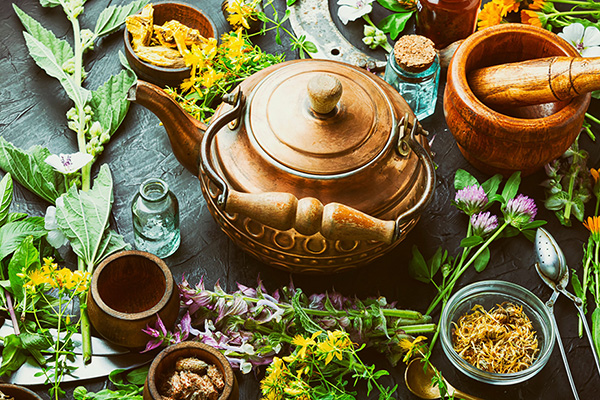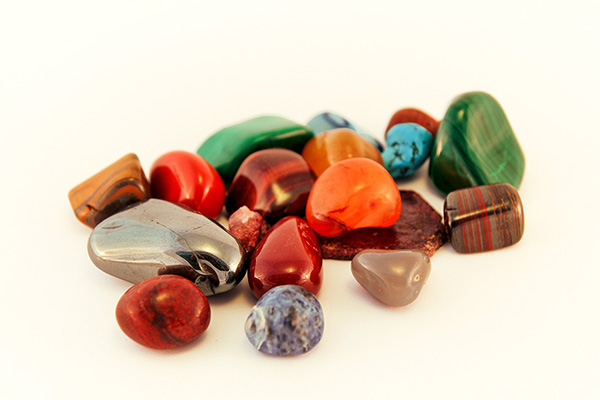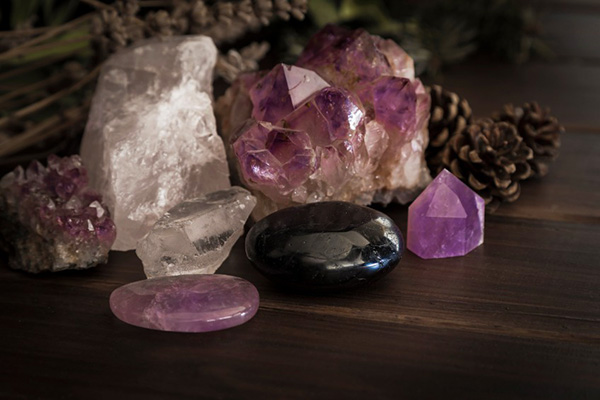metaphysical tools
Increase Your Power And Influence With Charisma
 Charisma is a skill that can have a profound impact on our personal and professional lives. It is often wrongly assumed that charisma is a personality trait or talent that some people are born with. The truth is charisma is a learned behavior and skill that can be developed by anyone.
Charisma is a skill that can have a profound impact on our personal and professional lives. It is often wrongly assumed that charisma is a personality trait or talent that some people are born with. The truth is charisma is a learned behavior and skill that can be developed by anyone.
Charisma is the magnetic ability to attract, charm, and persuade others with our words and actions. The term originates from the Greek khárisma, which means ‘favor freely given,’ or ‘gift of grace,’ because the ancients believed that possessing this quality was a divine gift bestowed only upon those who were favored by the gods.
It is generally associated with people who are confident, engaging, and influential. By cultivating charisma, we become more effective at reaching and connecting with others, which can be invaluable in life.
Whether we are seeking to build stronger, healthier personal relationships, foster better professional connections, or make more friends, having a strong presence and the ability to engage with others is a key factor for success. Charisma is not about being arrogant, manipulative, or insincere. Rather it is about being authentic and genuine, while also being able to express ourselves in a way that resonates with others.
Charismatic people are skilled communicators who are able to listen actively, empathize with others, and express themselves clearly and persuasively. They are also able to project confidence, enthusiasm, and positivity, which can be infectious and uplifting to those around them.
Empower Your Life With Affirmations
 Affirmation is a great self-empowerment tool for deliberate manifesting, personal transformation and self-healing. It is a simple, yet powerful spiritual practice to focus on what we wish to create and attract, and make the changes we wish for in ourselves and our life.
Affirmation is a great self-empowerment tool for deliberate manifesting, personal transformation and self-healing. It is a simple, yet powerful spiritual practice to focus on what we wish to create and attract, and make the changes we wish for in ourselves and our life.
An affirmation is an affirmative, positive statement or mantra that you repeatedly speak, preferably daily. Words or language have metaphysical power. By thinking, speaking, and writing affirmative mantras, slogans, chants, spells, invocations, or prayers we set powerful intentions for transformation and manifestation. Here are some examples:
I lоvе and ассерt myself.
I fully believe in myself.
My potential is limitless.
I am achieving greatness.
My body is healthy and strong.
My mind is powerful.
I have control over my thoughts and feelings.
I am happy and fulfilled.
Affirmations reframe and improve our thinking. It reconstructs our negative thought patterns and rewires our mind to become more positively focused. The more we repeat it, the more it creates neural pathways for positive thought. These empowering new pathways gradually replace our old, negative thoughts habits.
Empower Yourself With Astrological Intention
 Astrology is to me like a metaphysical best friend. It is a way to reflect in the mirror and expand my personal growth. By applying it daily over the past decade my life has become more mindful, and miraculous. I’ve also noticed that challenging astrological aspects, such as squares and oppositions, have become easier for me to deal with.
Astrology is to me like a metaphysical best friend. It is a way to reflect in the mirror and expand my personal growth. By applying it daily over the past decade my life has become more mindful, and miraculous. I’ve also noticed that challenging astrological aspects, such as squares and oppositions, have become easier for me to deal with.
An astrological square is considered one of the more adverse aspects in a chart. This placement is when two planets are separated by three zodiac signs and therefore positioned at a 90-degree angle in the chart at the time of birth. This creates competing tension between the energies of these two planets which neither can win, forcing them to compromise and somehow meet each other halfway.
An astrological opposition is another extremely challenging aspect in a chart. This placement happens when two planets are exactly opposite each other in the zodiac at 180 degrees apart. This means these two planets are in opposing signs and as far apart as they can possibly be on the astrological wheel. Their unique energies are therefore polar opposite, causing conflict, drama, and power clashes.
I keep track of these events in my chart because I incorporate daily astrological intentions in my life as part of my spiritual routine. My practice is to map out each day’s relevant transits and to then meditate on the significant aspects. I also pray for assistance where needed, such as with the significant squares and oppositions in my daily chart. Then, I go about my day.
The Universe Supports Effort, Not Entitlement!
 I frequently do candle work in my spiritual practice. However, in my experience this kind of ritual only works if the practitioner is already in a raised vibration and in healthy alignment with the eternal laws of the Universe.
I frequently do candle work in my spiritual practice. However, in my experience this kind of ritual only works if the practitioner is already in a raised vibration and in healthy alignment with the eternal laws of the Universe.
This is true even more so after the COVID-19 pandemic, due to the Great Conjunction between Jupiter and Saturn at the end of 2020 which ushered in a new wave of karmic responsibility.
Sadly, some practitioners I’ve encountered on my professional path do candle-lighting and other metaphysical rituals as if they’re an easy ‘magic wand’ that will absolve them of any and all personal accountability.
Not so! We cannot simply kneel down and light a prosperity or romance candle to quickly erase all our financial problems or relationship issues. What is required for such a metaphysical practice to be successful is realizing that God, Source, Spirit, the Divine loves and supports us infinitely in our efforts, not our passive entitlement.
Spirit is constantly striving to bring us to a better place of peace, joy, and abundance, but not without our proactive participation. This requires releasing a great deal of karmic debt, trauma, and self-important entitlement.
The humble spiritual warrior knows that beating one’s chest and recognizing your human frailty and imperfection is much more powerful, than being a pious and pompous ‘know-it-all’ who expects the best things in life to simply show up on their doorstep.
What are you choosing to do post-pandemic? Are you genuinely committed to a daily discipline of working on yourself? Or you will flurry like a confused flounder in the stale ocean waters of the withering Piscean age?
Developing Your Herbal Intuition
 Herbal medicine is becoming increasingly popular, and many people are increasingly turning to herbalism as a healthcare supplement, or even a substitute to conventional pharmaceutical medicine. Plants, flowers, and herbs all have unique energetic qualities that make them suitable for various purposes. They are alive and respond to their environment and how they are treated in the same way humans do.
Herbal medicine is becoming increasingly popular, and many people are increasingly turning to herbalism as a healthcare supplement, or even a substitute to conventional pharmaceutical medicine. Plants, flowers, and herbs all have unique energetic qualities that make them suitable for various purposes. They are alive and respond to their environment and how they are treated in the same way humans do.
When we think of herbs, we tend to narrowly categorize them according to the medical conditions they can be used for, or what aspect of our health and wellness they can improve. However, like people, herbs are much more complex and multi-faceted, and have many uses and applications, alone or in combination with other herbs.
To obtain the most benefit from any herb, we need to take the time and have patience to truly get to know the herb. When you meet someone for the first time at a social event, would you diminish the other person’s true worth by instantly deciding they have only one useful trait or redeeming quality, and leave it at that? Taking the time to get acquainted with a particular herb is much like getting to know someone in an intimate friendship.
Selecting herbs to work with or draw upon for healing is a highly intuitive process. The appearance, aroma, taste, texture, and energy vibration of the ideal herb for a specific purpose must speak to us mind, body, and soul. They convey a distinct energy signature and frequency of healing that the intuitively aware user will innately know is best to use at that time.
Seasonal Crystals To Prepare For The Spring
 The second half of the winter season, after the solstice, is an ideal time to establish new patterns and laying the groundwork for the coming spring and summer. Now is the ideal time to start adopting healthier lifestyle habits and plant spiritual seeds that will bloom in the months ahead.
The second half of the winter season, after the solstice, is an ideal time to establish new patterns and laying the groundwork for the coming spring and summer. Now is the ideal time to start adopting healthier lifestyle habits and plant spiritual seeds that will bloom in the months ahead.
Crystal that pairs well with this kind of winter energy work is clear, transparent quartz. It is a metaphysical staple for many practitioners, regardless the time of year, as it facilitates mental and emotional clarity and helps clear out negative energies. However, like a pristine winter pool of icy water, it also does not tolerate shadows and secrets.
Another winter-friendly crystal is selenite, which resembles an opaque spike of white ice. It acts as a cleanser, sweeping away the painful memories of the past and embracing the transition into a new year. Selenite is also closely associated with guardian angels and spirit guides, so it helps us to tap into their guiding wisdom more clearly.
Warmer, more fiery crystals can also help us generate some sparks and bring new heat to even the coldest, most hibernated of intentions. Citrine, with its inviting citrus hues attracts good luck and prosperity to the bearer. This crystal helps us stick to our goals and fulfill our greater purpose.
If you are wanting to increase your creativity and productivity this year, try fiery carnelian, with its sweltering deep orange and red-brown overtures. Its leading energy associations are inspiration, determination, and tenacity. Also, red or fuchsia garnet (appropriately also the birthstone for January) increases motivation and allows us to manifest our goals and aspirations.
The Ideal Starting Crystals For Beginners
 Crystals and gemstones are a popular resource in modern metaphysical practices, mysticism, and alternative spirituality. It can be used in various powerful ways, including healing, energy protection, meditation, prayer, manifesting, divination, psychic reading, and channeling.
Crystals and gemstones are a popular resource in modern metaphysical practices, mysticism, and alternative spirituality. It can be used in various powerful ways, including healing, energy protection, meditation, prayer, manifesting, divination, psychic reading, and channeling.
Crystals are versatile and useful in enhancing one’s spiritual practice or energy work, but there are so many to choose from that it can difficult to know where to start.
Three of my favorite crystals that I recommend for beginners to get started with are amethyst, rose quartz and black tourmaline. These three crystals are affordable and easy to find, so they are ideal to start with if you wish to explore using crystals to expand your spiritual practice.
Amethyst
Amethyst is the ideal stone to start with because it has a gentle energy that almost anyone can tolerate without being overwhelmed by its influence. It is a fantastic stone to help you get in touch with your intuition and find your calm center. Amethyst’s calming energy especially enhances meditation and dreamwork.
Amethyst is associated with the crown chakra. It heightens our spiritual and personal awareness, which in turn helps us to self-reflect and evaluate more honestly where we need to make adjustments in our beliefs, behavior, and perspectives. Amethyst thus supports us in maintaining clarity in our self-reflection, which is a vital first step in a spiritual journey of higher consciousness and personal enlightenment.